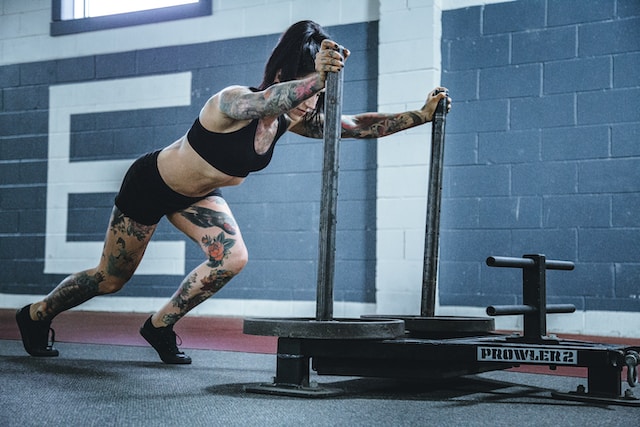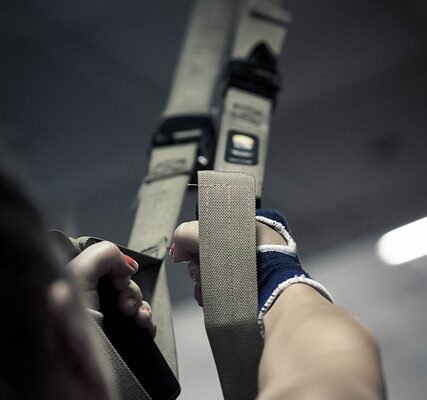Push and pull workouts are exercises that involve pushing or pulling motions. Push-day activities entail pushing a weight or the ground away from your body (for example, squats and push-ups), whereas pull-day exercises involve drawing a weight toward your body (for example, biceps curls and bent-over rows).
When someone mentions their recent “push day workout” at the gym, they don’t mean they worked harder than normal.
Pushing and pulling are two essential movement patterns you’ll undertake in everyday life, along with hinging and turning.
However, you do not have to schedule your workouts so that one day is all-push, and the next day is all-pull. A push-pull training regimen can be approached in a variety of ways:
Push-pull upper/lower body: Perform a push-pull upper body day and do a push-pull lower body the next day.
Push/pull the entire body: Perform all push-day exercises (upper and lower body) one day, then all pull-day exercises (upper and lower body) the next.
Push/pull/legs: This popular alternative consists of an upper-body push day, followed by an upper-body pull day, followed by a general leg day.
Push/pull together: For a more balanced workout, combine both movement patterns and conduct one session that combines both pushing and pulling activities. This can concentrate on your upper or lower body or both.

The idea, no matter how you divide it up, is to avoid training the same muscles on consecutive workouts or days. Make sure to leave a day of rest in between exercising a given muscle group, regardless of how you split it up. This is necessary for your body to recover so that you can return to full strength and repeat the workout. (By the way, push-pull workouts are only one form of workout split.)
Push and Pull Exercises to Try
Below are two workouts, one for push day and one for pull day. These are common moves that have been incorporated into two total-body workouts. Remember that these are only ideas, and there’s no shame in tweaking the moves to make them work best for you.
Also crucial: We recommend performing a warm-up session before attempting to lift hard on any of the pull or push movements. A warm-up routine gets that mind-body connection ready for when we go heavier.
Are you ready to give push-and-pull workouts a shot? On your push-and-pull days, follow the workouts below, or you can use one of your favorite movements to create your own push-pull exercise plan.
All of these workouts are doable with at-home equipment. If you’re in the gym, you can substitute a lat pull-down on the machine for the dumbbell lat pullover.
Push Day Workouts
It operates as follows: Perform the recommended number of repetitions for each exercise, then repeat the push-day workout 2–3 times more.
You will need a pair of medium dumbbells.
Chest Fly
A. Lie on the floor with your feet flat on the floor. Have a dumbbell in each hand facing inward. Have your arms stretched (but not locked) so the dumbbells hover directly above the chest.
B. Lower both arms out to the sides while keeping your elbows slightly bent. When they reach shoulder height, pause.
C. Squeeze your chest to elevate the dumbbells above your chest.
Do 10 to 12 reps.
Chest Press
A. Lie on the floor with feet level on the floor, elbows out to sides so that biceps form a 45-degree angle to the torso and palms facing inward.
B. Straighten your arms and press the dumbbells up and away from your chest with the weights directly over your shoulders.
C. Return to the starting position by lowering the dumbbells and bending the elbows.
Perform 10 to 12 reps.
Overhead Triceps Press
A. Stand with feet hip-width apart, both hands on one end of a dumbbell, and arms extended overhead; biceps are adjacent to ears.
B. Keeping your elbows tucked in, carefully lower the dumbbell behind your head until the bottom end is in line with your shoulders.
C. Return to the starting posture by straightening your arms and pressing the dumbbell overhead.
Perform 10 to 12 reps.
Shoulder Press
A. Stand with your feet about a foot apart and your arms elevated to shoulder height, holding a dumbbell in each hand. Your palms should be facing forward with elbows bent.
B. Raise the dumbbells directly overhead, stacking the wrists directly over the shoulders and the biceps next to the ears.
C. Pause, then slowly bend your elbows and return the dumbbells to starting position.
Perform 10 to 12 reps.
Squat with Dumbbells
A. Stand with your feet shoulder-width apart and a dumbbell in front of your chest.
B. Sit back into your hips and bend your knees to lower your thighs until they are parallel to the floor. Keep your chest up and your back from rounding.
C. Take a breather, then press through to straighten your legs and return to standing.
Perform 10 to 12 reps.
Workout for Pull Day
It operates as follows: Perform the recommended number of reps for each exercise, then complete the pull day circuit 2 to 3 times more.
You will require the following items: a resistance band and a set of medium dumbbells.
Biceps Curl
A. Stand with your feet about a foot apart with your arms at your sides. Hold a dumbbell in each hand, and palms facing forward.
B. Raise the dumbbells to shoulder height by bending the elbows.
C. Pause, then straighten your arms to return the dumbbells to their sides.
Perform 10 to 12 reps.
Knee Lift and Drive
A. Stand with your feet together, your hands on your hips, and your core engaged. Raise the right knee to hip height, with the right leg bent in front. This is your starting point.
B. With the right thigh parallel to the floor and the hips square, drive the right knee toward the right until the knee is nearly in line with the hips.
C. Pause, then return the right knee to the beginning position.
Perform 10 to 12 reps. Repeat on the other side.
Seated Row
A. Sit on the floor, back straight, legs extended, knees slightly bent, and a resistance band wrapped around your feet. Hold the band ends at the sides of your knees.
B. Keeping your core tight, draw your elbows back next to your ribs and pull the band toward your belly button.
C. Pause for a while, then slowly straighten your arms and release the band.
Perform 10 to 12 reps.
Reverse Fly
A. Stand with your feet about a foot apart. Your arms are at your sides, a dumbbell in each hand. Maintaining a straight back and slightly bent knees, and bending forward until the torso is at a 45-degree angle. Allow your hands to hang directly below your shoulders, palms facing each other.
B. Lift the dumbbells up to the sides until they reach shoulder height while keeping the core engaged and leading with the elbows.
C. Hold the position for a second, then slowly lower the dumbbells until they are directly below the shoulders.
Perform 10 to 12 reps.

Deadlift
A. Stand with your feet about a foot apart. Your arms in front of your thighs, a dumbbell in each hand, palms facing your legs.
B. Keeping your core engaged and your back flat, move your hips back and slightly bend your knees to descend the dumbbells until they reach your shins.
C. To return to the starting posture, drive your hips forward, straighten your knees, and squeeze your glutes.
Perform 10 to 12 reps.
Lat Pullover
A. Lie on the floor face up. Have your feet flat on the ground by bending your knees. Your arms are extended behind your head, holding the ends of a dumbbell in your hands.
B. Lift the dumbbell overhead, keeping your core engaged and your back flat until it is directly above your chest.
C. Pause, then return to the starting position by lowering the dumbbell to the floor behind the head.
Perform 10 to 12 reps.
To Conclude
So, what’s the objective of doing a push-pull workout? It’s a solid strategy to prevent overworking the same muscles or overtraining the front of your body while neglecting your posterior chain.
Because you’re working opposing muscles, alternating days of push and pull workouts allows your muscles to rest and recover. In terms of time, these workouts allow you to get a workout a lot while attacking muscle groups in a different way.

